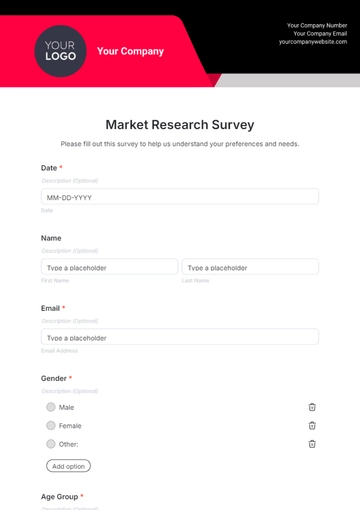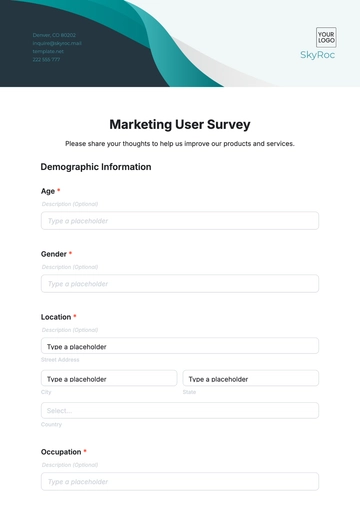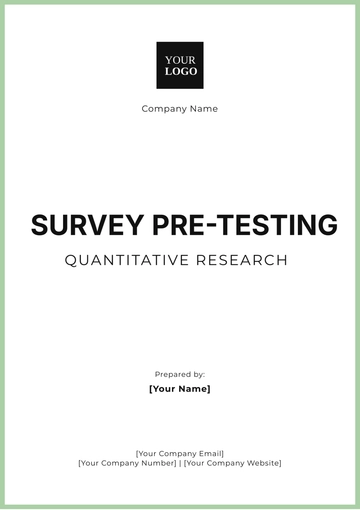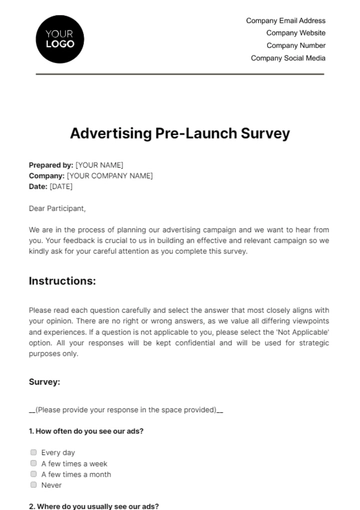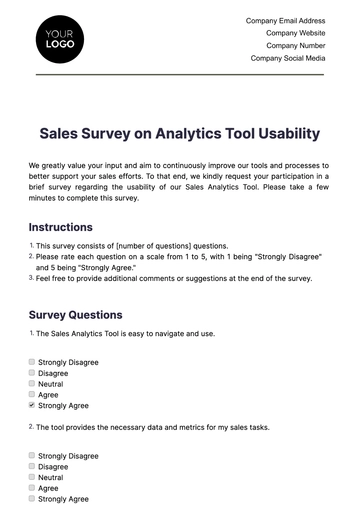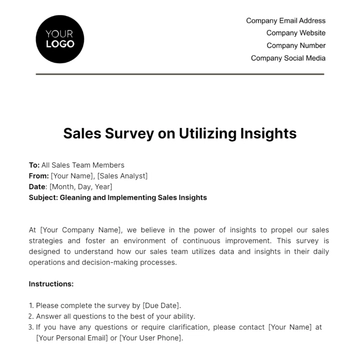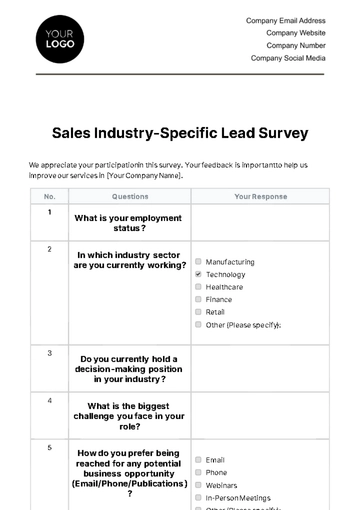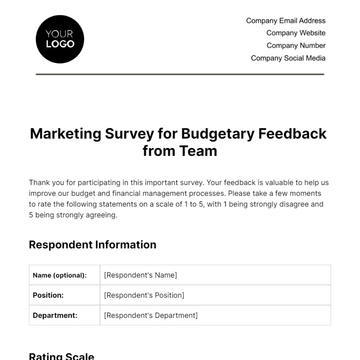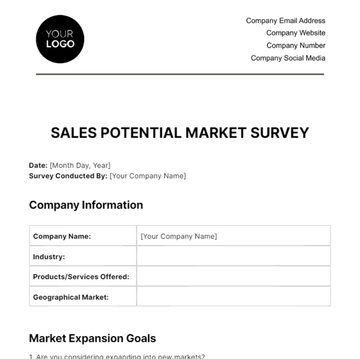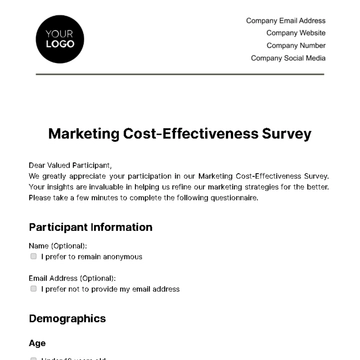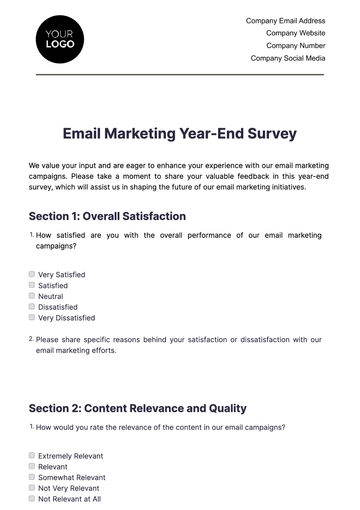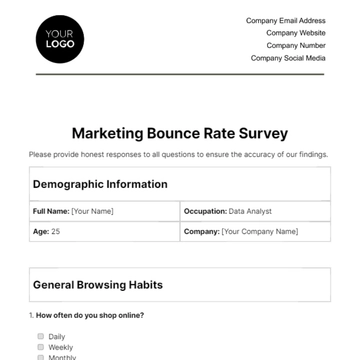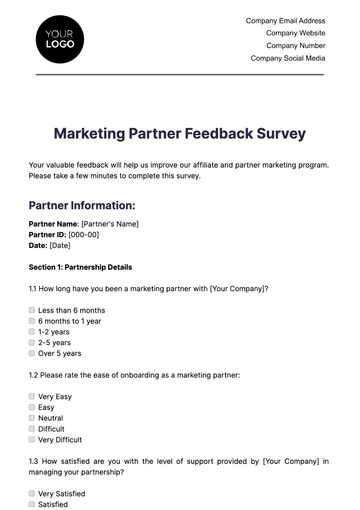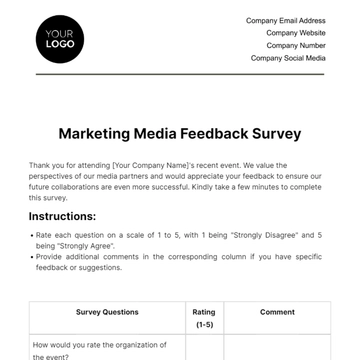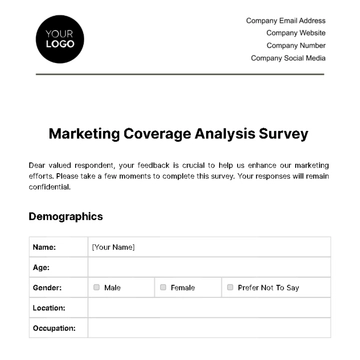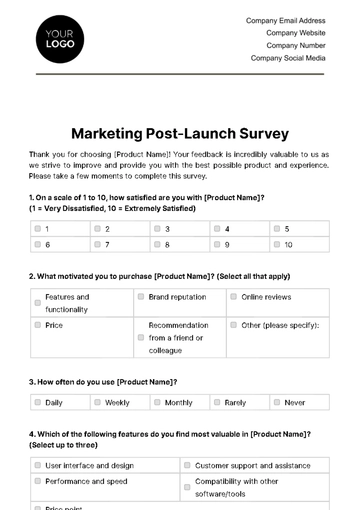Free Market Trends Survey Research

Prepared By: [YOUR NAME]
Date: [DATE]
I. Executive Summary
A. Purpose of Research
The objective is to conduct a thorough assessment of the present dynamics within the market and to formulate predictions regarding future trends based on the insights gathered.
The purpose is to thoroughly identify and analyze significant changes in consumer behavior patterns, as well as to uncover potential market opportunities and risks that may arise from these shifts.
B. Key Findings
Consumer Behavior Patterns: Consumers are progressively showing a stronger preference for online shopping and increasingly placing a higher importance on sustainability in their purchasing decisions.
Strategic Insights: Businesses need to enhance their digital presence, invest in sustainable product development, and offer personalized experiences to remain competitive.
II. Objectives
Identify Market Trends: Examine current market shifts and emerging trends in consumer preferences and industry developments.
Analyze Consumer Behavior: Gain a comprehensive understanding of the dynamic and ever-changing trends in consumer purchasing decisions, as well as the underlying attitudes and perceptions that influence these choices.
Support Strategic Decisions: Offer analytical insights to guide businesses in making informed choices regarding their product strategies, marketing methods, and market positioning.
III. Methodology
The survey was conducted using a quantitative method, gathering data through an online questionnaire. The sample size consisted of 1,000 respondents, representative of the target market demographics. Data collection spanned over four weeks, and advanced statistical techniques were employed for data analysis, including regression analysis, cluster analysis, and trend identification.
IV. Market Overview
A. Current Market Characteristics
Growth Rate |
|
Market Size |
|
Key Sectors |
|
B. Major Market Players
Company A |
|
Company B |
|
Company C |
|
C. Competitive Landscape
Innovation: The market is characterized by a consistent and regular occurrence of technological advancements, along with the continual introduction of new products.
Competition Level: The level of competitiveness in the market is high, characterized by the influx of numerous new participants and a persistent necessity for ongoing innovation.
V. Key Trends and Insights
A. Market Trends
Sustainability: There has been a noticeable increase in the preference among consumers for products that have a minimal impact on the environment.
Personalization: There has been an increasing demand from consumers for product experiences that are customized and tailored specifically to their individual preferences and needs.
Digital Solutions: The widespread implementation and integration of technology-driven solutions across a diverse array of market sectors and industries.
B. Demographic Shifts
Younger Consumers: Growing influence of younger demographics who value convenience, quality, and personalization over cost considerations.
VI. Consumer Behavior and Preferences
A. Survey Findings
Online Shopping Preference: 70% of the survey respondents favored online shopping, highlighting its convenience and the extensive range of products as their main reasons.
Importance of Sustainability: 60% of consumers take sustainability into account as a significant factor when making their purchasing decisions.
Willingness to Pay for Quality: 85% of respondents are willing to pay a premium for high-quality and personalized products.
B. Implications for the Market
Digital Focus: Companies ought to place significant emphasis on developing and prioritizing their digital channels, as well as formulating and implementing comprehensive e-commerce strategies.
Sustainability Efforts: Place a significant focus on promoting and integrating environmentally friendly practices and products to align with the values and ethical considerations of consumers.
Personalized Offerings: Develop and market products that cater to individual preferences and enhance customer experience.
VII. Competitive Analysis
A. Competitive Strategies
Company A: Utilizing advanced technological tools and systems to significantly improve the overall user experience and elevate the quality of customer service provided.
Company B: Focusing heavily on sustainability and eco-friendly products to appeal to environmentally-conscious consumers seeking to make responsible, green purchasing choices.
Company C: Employing highly assertive and competitive pricing strategies to effectively capture and secure a substantial and broad market share across various segments of the industry.
B. Market Dynamics
Innovation: Rival companies are intensely concentrated on making significant progress in technological developments and pioneering the creation of new and innovative products.
Sustainability and Pricing: Companies are adopting different strategies to differentiate themselves in terms of sustainability and pricing.
VIII. Conclusions and Recommendations
A. Conclusions
The market is progressively undergoing a significant transformation, with an ever-growing emphasis on adopting digital solutions and incorporating sustainable practices into its operations. As this dynamic environment continues to develop, the capability to tailor and customize products and services has gained immense importance. This ability is now playing a crucial and increasingly influential role in shaping and guiding the decision-making processes of consumers.
B. Strategic Recommendations
Invest in Digital Transformation: Increase the visibility and impact of your business in the digital realm while also leveraging technological advancements to streamline and optimize various aspects of your business operations.
Focus on Sustainability: Focus on developing and promoting eco-friendly products to meet consumer needs and improve the brand's reputation.
Enhance Personalization: Develop specialized products and customize interactions with customers to foster a sense of loyalty and attract a clientele willing to pay a premium for your offerings.
C. References
Doe, J. (2052). "Sustainability Trends in Consumer Markets." Journal of Market Research, 46(3), 123-145.
Smith, A. (2051). "Digital Transformation in Retail Industry." Harvard Business Review, 52(4), 67-89.
- 100% Customizable, free editor
- Access 1 Million+ Templates, photo’s & graphics
- Download or share as a template
- Click and replace photos, graphics, text, backgrounds
- Resize, crop, AI write & more
- Access advanced editor
Stay ahead of the curve by understanding market dynamics with our Market Trends Survey Research Template from Template.net. This editable and customizable template is your key to gathering essential market data. Using our Ai Editor Tool, you can personalize the survey to target specific industries or product segments, ensuring you capture the most relevant market insights.


